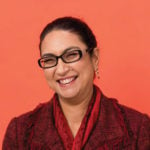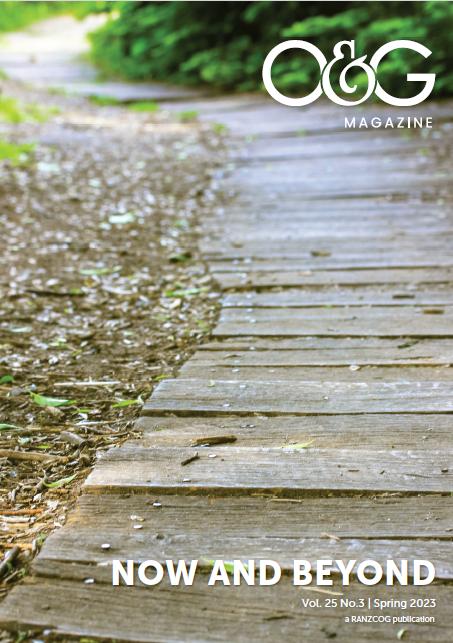Everyone who visited old College House in East Melbourne will remember walking into the Council room and being surrounded by the grand portraits of former RANZCOG presidents. I have memories of sitting in this room, feeling the eyes of the stalwarts of RANZCOG staring down at me from those portraits. I remember thinking, “No one on these walls is like me. Do I really belong here? Was this institution ever meant for someone like me?”
In recent years, there have been prominent discussions about the representation of leaders in healthcare institutions, medical universities and royal colleges. As both, Australia and Aotearoa New Zealand strive for inclusivity and diversity with a stronger recognition of our First Nations peoples and their centuries old cultures, the question arises: should we continue to display portraits and photographs in our organisations, exclusively featuring a single type of representative (usually white, male), or should we consider replacing them?
As we foster connection with the communities we serve, we have to ask if the images we use on our websites, publications and patient information material reflect the diversity of these communities? And how do we know that a particular image is or is not representative of diversity? Does an image tell the full story of an individual and are we narrowing our focus to just ‘one’ issue? Do we risk wiping away history if we decide to remove portraits that reflect the historical leadership of RANZCOG?
The move from College House to Djeembana College Place has given us the opportunity to reflect on how RANZCOG can promote inclusivity and belonging, and the role of portraits, photographs and other images as a means of embracing all the diversity that enriches our profession and our multicultural community.
Both Australia and Aotearoa New Zealand share a common history of colonisation, albeit under differing circumstances. First Nations people in both countries have shorter life spans, poorer health outcomes, inequitable access to healthcare and educational opportunities. In Australia, Indigenous Australians make up 3.3% of the population but less than 0.5% of medical practitioners. Over a third of Australian doctors obtained their primary medical qualification overseas. In Aotearoa, 4.4% of doctors are Māori, well short of Aotearoa’s estimated 17% Māori ethnic population, while 41% of Aotearoa’s doctors obtained their primary medical qualification overseas. In the early days of colonisation, the patterns of medical immigrants, unsurprisingly, showed parallels with the arrival of colonists overall. More recently, this pattern of medical migration has seen a significant change with a large number of doctors currently arriving from different parts of the world, thus changing the demographics and diversity of medical workforce in both countries.
Historical portraits and photographs reflect imbalances in academic and societal structures. The display of portraits exclusively featuring a predominant majority can inadvertently reinforce the existing power structures and hierarchies within medical leadership. By replacing or supplementing these images with more diverse representation, we can try to actively acknowledge and attempt to correct these imbalances.
Membership organisations like RANZCOG should reflect their diverse membership as well as the diversity of communities their members serve. By embracing a more inclusive approach to representation, the College sends a powerful message that everyone’s contributions are valued and that opportunities are open to all, regardless of individual identity based on the narrow scope of gender, race or ethnicity (among a myriad of other individual identities). Images displayed prominently on walls of institutions have the potential to shape the perceptions and aspirations of future generations. The mantra of ‘be what you see’ has inspired many movements to recognise the contributions of those who were previously marginalised. Many countries including the US, UK and more recently in Australia and Aotearoa, have seen an increasing recognition of the lack of monuments that celebrate women leaders or activists, thereby ignoring their historical contribution. This has led to a concerted effort to honour these forgotten heroes and redress the balance. Similarly, efforts of activists to redress imbalance in honours lists has seen history made this year in Australia with women outnumbering men in the General Division of the King’s Birthday Honours List. By diversifying the representation of leaders and recognising their work, we challenge the traditional stereotypes associated with leadership. People from underrepresented backgrounds are more likely to envision themselves as future leaders when they see people who resemble them in leadership roles being honoured and represented in portraits or statues. This has the potential to inspire a new generation to pursue professional excellence and contribute to a more inclusive and equitable future for women’s health.
By actively diversifying the representation via photographs, the College is demonstrating its commitment to equality, inclusivity, and equal opportunities for all. Showcasing individuals from different backgrounds, identities, and perspectives cements RANZCOG’s position as an organisation fostering an environment where all members, regardless of their background, thrive.
Our efforts to embed inclusivity and belonging do not stop at celebrating diversity in imagery alone. These core tenets form part of RANZCOG’s strategy. The College’s Strategic Plan explicitly incorporates “Respect” defined as expecting and promoting inclusivity, valuing individual rights, beliefs and choices, as well as “Advocacy” defined as identifying as a leading voice for equity. With its Diversity and Inclusion policy, RANZCOG has made a firm commitment to a culture that embraces and celebrates all the differences within the College united in the single similarity of being dedicated to the provision of healthcare to all women. In keeping with this, it is only fitting that the portraits that adorned College House are no longer on display at Djeembana College Place.





Leave a Reply